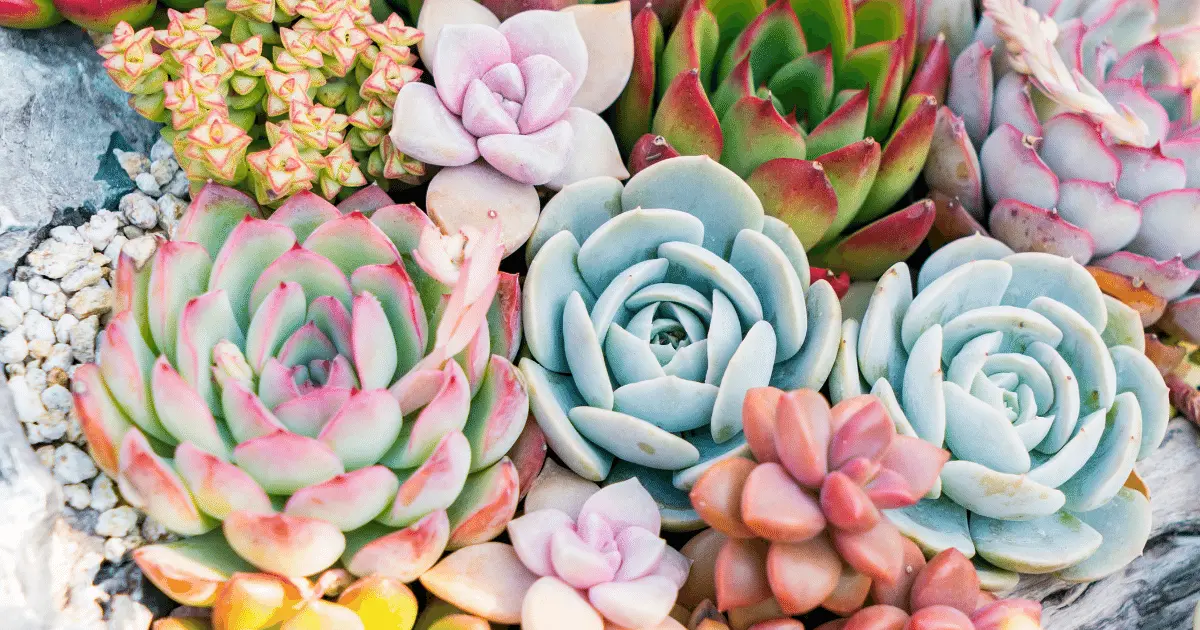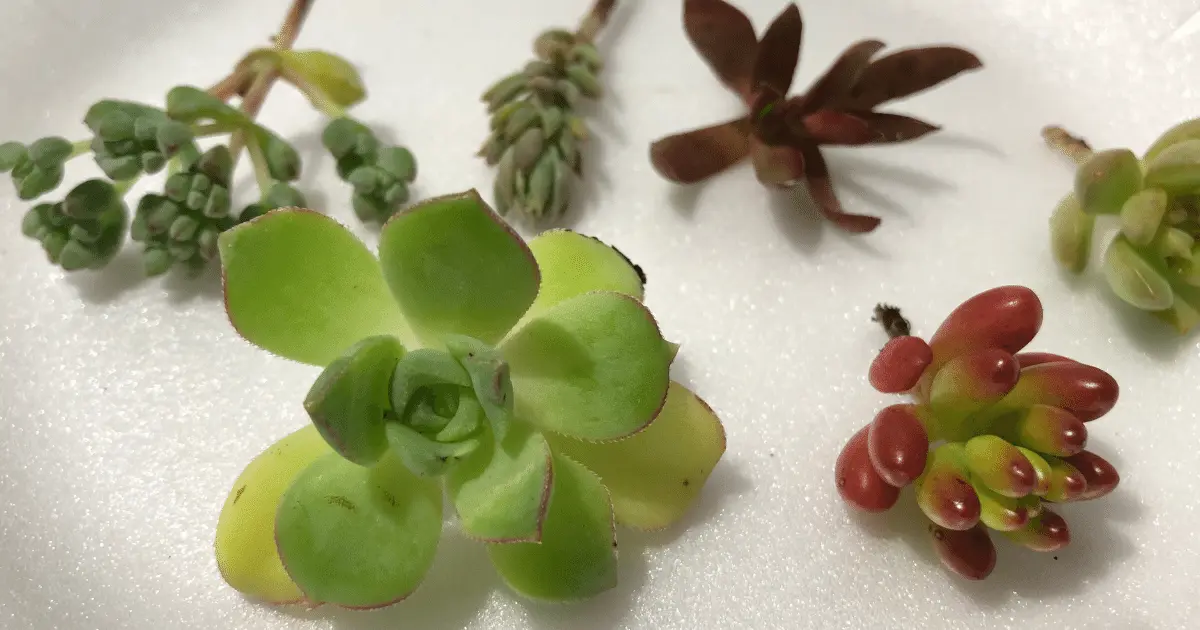Succulents are such an incredible variety of plants I’ve always loved to propagate. While Growing up in a home surrounded by these wildly thriving fleshy wonders of nature, it always felt natural watching them bloom.
I’m particularly fascinated by their many colors and appearances, their ability to thrive in almost any climate, and aesthetic, spiritual, and medicinal properties.
Not only do they require minimal effort to propagate, the process of reproducing one is an experience every plant lover would want to try out.
So let me walk you through the easiest methods of propagating succulents.
There are three (3) best ways to propagate succulents around the home, office, or other gardening areas:
- Propagation by Division of a parent plant
- Propagation using offsets and pups
- Propagation by cuttings
Of all the beautiful characteristics I love most about succulents, their ability to develop new pus from generally any part of the parent plant is simply magical.
How to Propagate Succulents by Division

You can grow new ‘baby succulents’ from a parent plant by division of a portion of the parent plant. This can be achieved in two different ways.
Propagating Succulents by Separating the Parent Roots
- Once you’ve identified your chosen parent succulent plant for the process, gently uproot it from the earth and shake off the soil.
- Next, use your fingers to separate each root nodule gently
- You can now propagate each divided root to grow new tender plants.
- The separated root nodules can be grown immediately on well-drained soil, or you could prepare a growing medium for indoor Propagation.
- I recommend developing a mix of perlite with potting soil to enhance the growth of the new succulents.
- As a general rule, you must give the growing succulents the right amount of water for optimum growth.
- Too much water makes their tender leaves bloated and looks pale, whereas when the water availability is below the minimum threshold, they tend to shrink and wilt.
- Before transferring the roots into the soil, ensure the texture of the earth is quite porous and not overly moldy. You have to work the ground to ensure proper aeration and maximum availability of nutrients to the new plant.
- Lastly, you should always ensure the new plants are not placed in view of direct sunlight, so they don’t get ‘sunburns.’ Succulents generally don’t do well under direct sunlight during their early Propagation stages.
Also, it would help if you waited a day after propagating the new plant before sprinkling water. Please avoid sprinkling water directly on the leaves or stems, but rather focus the water on the surrounding soil. This forces the roots of the tender succulent to ‘stretch out at the scent of nearby moisture and speeds up their growth.
Propagation of Succulents by Division Using Offsets and pups

Another easier way to grow your succulents from a parent plant is by simply pulling out the plantlets and offsets growing on it and propagating those as new pups.
Several succulents, such as the Kalanchoe pinata, barrel cactus, and echeveria, produce plantlets called ‘Hen and Chicks,’ which can be grown into new plants.
There are also some varieties of succulents whose offsets drop as seeds close to the parent plant and can be propagated into new pups.
Propagating Succulents by Cuttings
As mentioned earlier, almost every succulent plant can be propagated by simply cutting a portion of the parent plant and growing this into a new pup.
There are two (2) popular approaches to the Propagation of succulents by cuttings
- Propagating Succulents by Stem Cuttings
- Propagating Succulents by Leaf cuttings
Other exciting ways of developing succulent cuttings such as beheading the parent plant and growing both cuttings into new plants have been experimented, but that’s just too dramatic and unappealing to most lovers of these beautiful plants.
Let’s explore the differences between stem and leaf cuttings in propagating Succulents.
How to Propagate Succulents from Stem Cuttings

Growing a new plant from a portion of the old parent’s stem is familiar to most horticulturists. It is best for certain varieties of succulents that usually have well-developed Rossetti and branches (such as Aeoniums).
But for some of us new to this, I’ll give a detailed breakdown of the processes I’ve learned. Before we begin the process, some equipment must be kept handy.
You’ll need to lay your hands on these essential gardening tools:
- A medium for potting your new plant when fully propagated
- Garden gloves
- A pair of scissors
- Sharp shears
- A trowel for packing soil
- Some Plastic containers for transferring the potting medium
Now let’s get into the process properly;
- Using your scissors, pick a fleshy portion of the stem not less than one inch long, having well-developed leaves (most preferably close to the base of the plant).
- Cut the stem portion and remove its leaves.
- Place the stem cuttings in a dry area without direct sunlight for about 2-3 days until the stem cuttings are well hardened and ready for the next stage.
- Place the calloused stem cuttings into a prepared soil medium with good drainage. You should ensure there’s proper sunlight reaching the potting medium.
- Sprinkling water should be provided until the soil is moist, and watering should be repeated for one or two days until the stem cuttings begin to grow new roots.
The entire process takes a few weeks to several months, depending on the variety of succulents you’re propagating
How to Propagate Succulents from Leaves

A more significant proportion of happy propagators enjoy propagating their succulents from leaves because it seems like a miracle to grow a whole new plant from just a leaf, but watching it happen is quite the experience.
The best Succulents to use for leaf cuttings Propagation are those with ‘leggy stems’ (e.g., Christmas cactus). These are succulent plants with well-grown stems and spread-out leaves.
Once you have a succulent plant with a stalk of over 3 inches in height and several tiny branches with well-developed leaves, it can be used for leaf Propagation.
- Using your pair of scissors, gently nip out a number of the leaves. You can also use your fingers to gently twist the leaf at the base to nip it out of its stem.
- Ensure you pick out the well-developed leaves, not the tender ones. It’s preferable only to pick the leaves from the bottom of the stem.
- Ensure your chosen leaves are not looking torn, weak, or unhealthy. Only pick the leaves with perfect coloration and no signs of infestation.
- Now place the healthy-looking leaves on a prepared towel or dry surface lined with baking sheets. Ensure the environment is cool and there’s no moisture around the leaves to prevent rotting.
- The leaf cuttings should be in this position for about 3-7 days to become healed at the point of detachment from the parent stems.
- You should prepare a rooting medium and dip the calloused end of the leaves into the rooting medium before placing the leaves on a bed of rooting soil. (some propagators prefer to use rooting hormones for speedy Propagation, but pure honey is also efficient for this).
- Ensure the leaves are placed with the cut-end facing upwards, away from the soil, and the soil should be well drained to avoid excessive moisture causing the leaves to rot instead of sprouting new roots.
- Next, place the medium under indirect sunlight and apply water spray daily until rooting occurs. Please ensure no direct sunlight reaches the tender pups at this stage, as this will most certainly burn them off.
- Once the roots are out (most certainly after several weeks of monitoring the set-up), you can cover the roots with damp succulent-enriched soil to encourage further root development.
The new succulent plant will be ready for transfer to its unique pot or nursery after 2-6 weeks of rooting, depending on the variety.
10. Remove the parent leaf, make a hole in the pot filled with well-drained and enrich the soil. Then place the new plant in the potting and apply spray moisture on it daily.
Finally, Your young succulents can be placed under direct sunlight for proper development, and you must keep monitoring your baby succulents as they bloom into maturity.
